Synthesis Process
To start our synthesis process, we began by laying out all of the data we had collected during our baseline study, including interview responses and study data. We selected some of the more outstanding delights, surprises, and pains, and marked them with different colors so that we could keep track of them as we moved the post-its around. We then moved on to affinity mapping, grouping each of our data points together with their similar responses. A number of piles were mostly positive responses to questions, so we colored those to keep track of what factors increased people’s enjoyment of the outside, and their ability to spend more time outside. Finally, we organized the post-its by frequency, which allowed us to ascertain which of those factors were most important for us to focus on. For instance, the affinity mapping showed us how working out, eating outside, going to class, and smoking weed all increased participants’ time spent outside, while the frequency mapping showed us that the trip to class was the most important way that our participants got time outside.

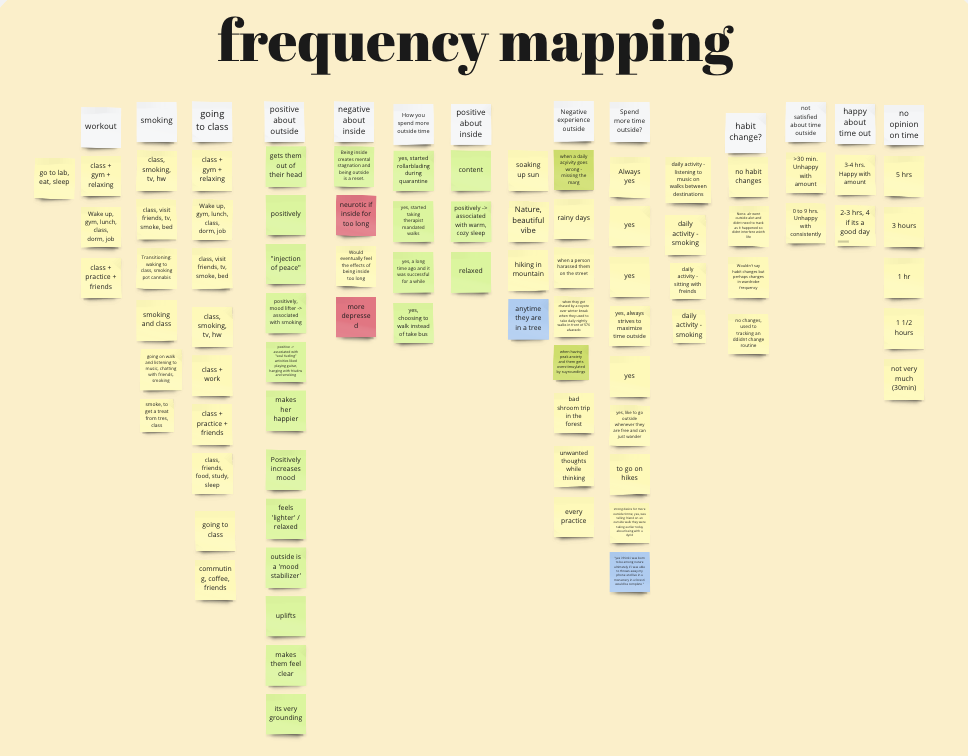

Next, we constructed a connection circle to map these relationships, based on the things that we found most important from our data synthesis exercises. Habitual/Routine factors that effect time spent outside include class, homework, working out, smoking, eating meals, and spending time with friends. Emotional factors included being tired or energetic and stressed or relaxed. And finally, the most commonly mentioned environmental factor was weather. Each of these factors affect each other as well as affecting time spent outside, and outside time is a product of a number of complicated, interwoven contexts and factors.

To get some additional sense of the direction we want to head in, we mapped a number of other apps designed to get people outside. The first graphs the breadth of the app’s target audience by how reusable it is, and the second graphs the amount of effort needed on the user’s end to how impactful it is. We found that apps like FitBit, Finch, and Pokemon go reach a wide audience, are heavily reusable, require more or less reasonable effort, and are highly impactful towards our end goals.


Proto-personas and Journey Maps
AC: Student, Lab Worker, and Basketball Player
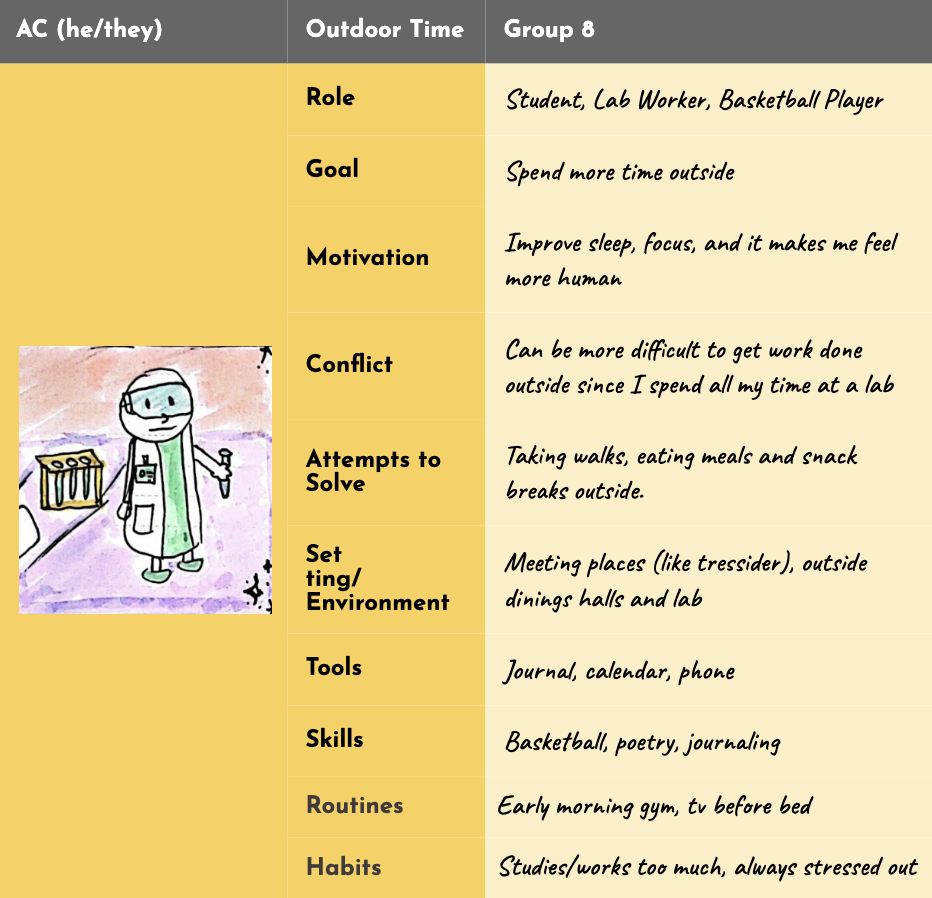
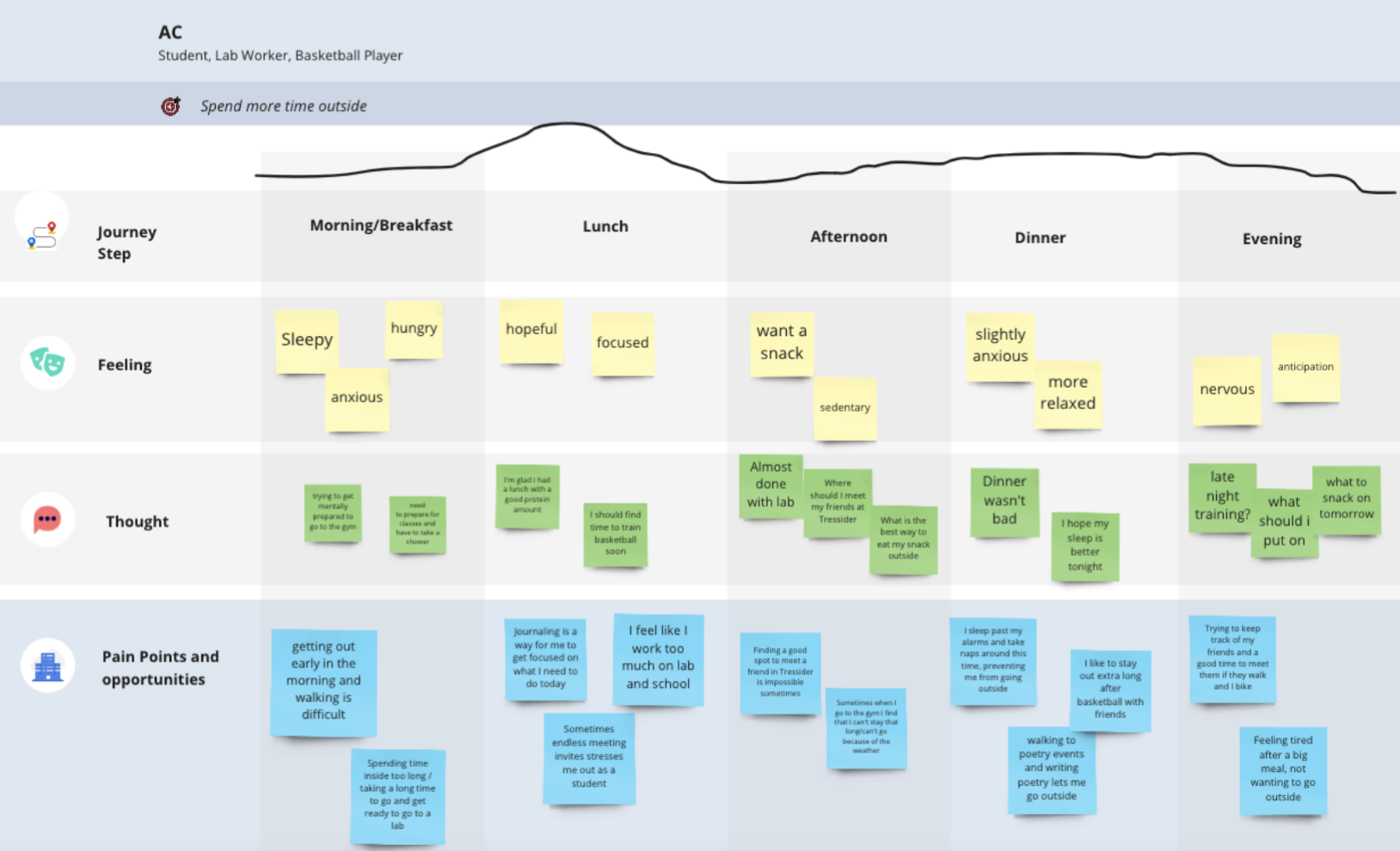
Sandy Cheeks: Student and Social Smoker
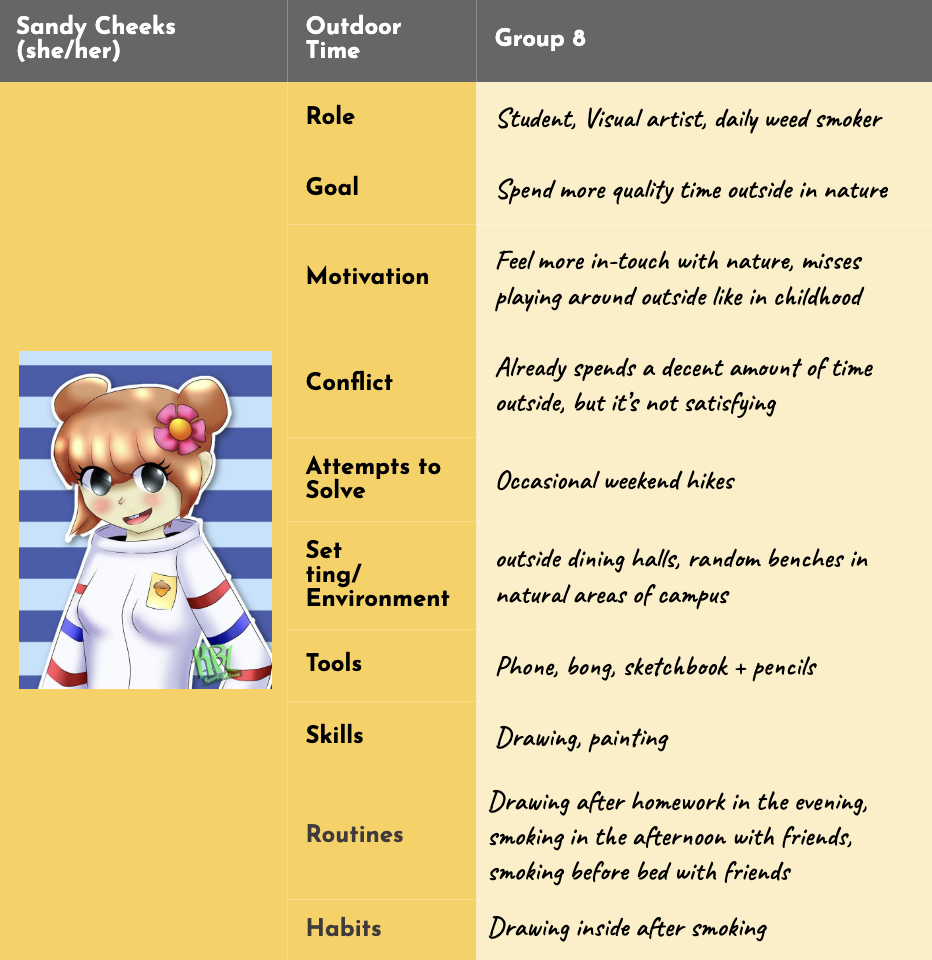
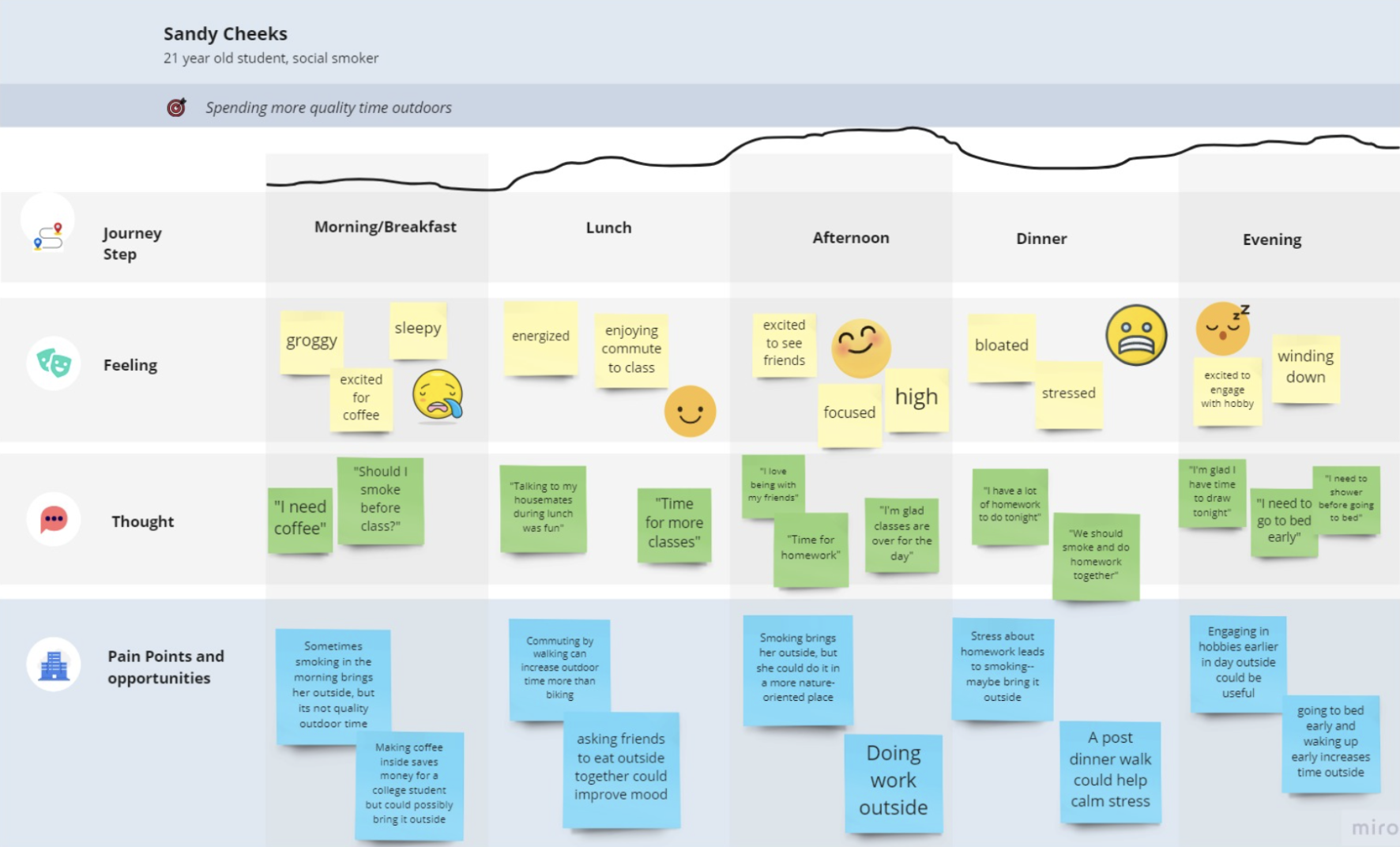
Intervention Study
Intervention Idea
We came up with our intervention idea of having people take either one meal or a drink outside instead of inside. We came up with this idea after thinking about the reading Tiny Habits, where it was discussed that adding one habit on top of another is highly effective.
Top 3 Intervention Ideas
Intervention Idea 1
Have people eat at least one meal (or take their coffee) outside near natural space per day.
Pros
- Incorporating natural space element, which is shown to improve well-being
- Attaches itself to another habit that one might already have
- People more likely to complete due to ease
Cons
- Hard to do in rainy/cold weather
Intervention Idea 2
Have people take one lap around Lake Lag everyday
Pros
- Incorporates both blue space and green space (best of both worlds)
- Incorporates a bit of exercise as well
- Fun activity to do with friends
- Can be done more easily in cold weather
Cons
- Lake Lag is far for people on East campus
- Possibility of low completion rate
- Hard to do in rainy weather
- Does not attach itself to any pre-existing habit
Intervention Idea 3
Have people take some deep breaths outside after a work session.
Pros
- Incorporates an element of meditation with going outside
- Attaches itself to a habit people already have
Cons
- Hard to do in rainy/cold weather
- Ambiguous and hard to define “work session”
- Might not add up to enough time outside to cause any differences in mood
We decided to go with Idea #1, which is eating a meal (or taking one’s coffee) outside near some sort of nature. We liked this idea best because not only did we think it would have the highest completion rate, but we also found it to be the most likely that people might carry into their lives after the study is completed. We found that for many of our diary study participants, being outside is not enough–they also want to enjoy nature. This coincides with the studies we read for our literature review, which said that interacting with nature improves overall well-being.
Intervention Study
For our intervention study, we are asking people to eat one meal or have a drink outside. At the end of the day, we send them a google form that asks the following questions:
- What meal/snack/drink did you have outside?
- Where did you have your meal/snack/drink outside?
- What time did you have your meal/snack/drink outside?
- How long were you outside when you had your meal/snack/drink outside?
- Was anyone with you when you had your meal/snack/drink outside? If so, state your relationship.
- How did you feel about having the meal/snack/drink outside?
We feel like it is important to not only know how long they were outside and the time of day, but also whether the person was alone or with friends, as this could also influence mood. The two biggest factors we are trying to take away from this is the amount of time spent near nature and the corresponding mood.




Comments
Comments are closed.